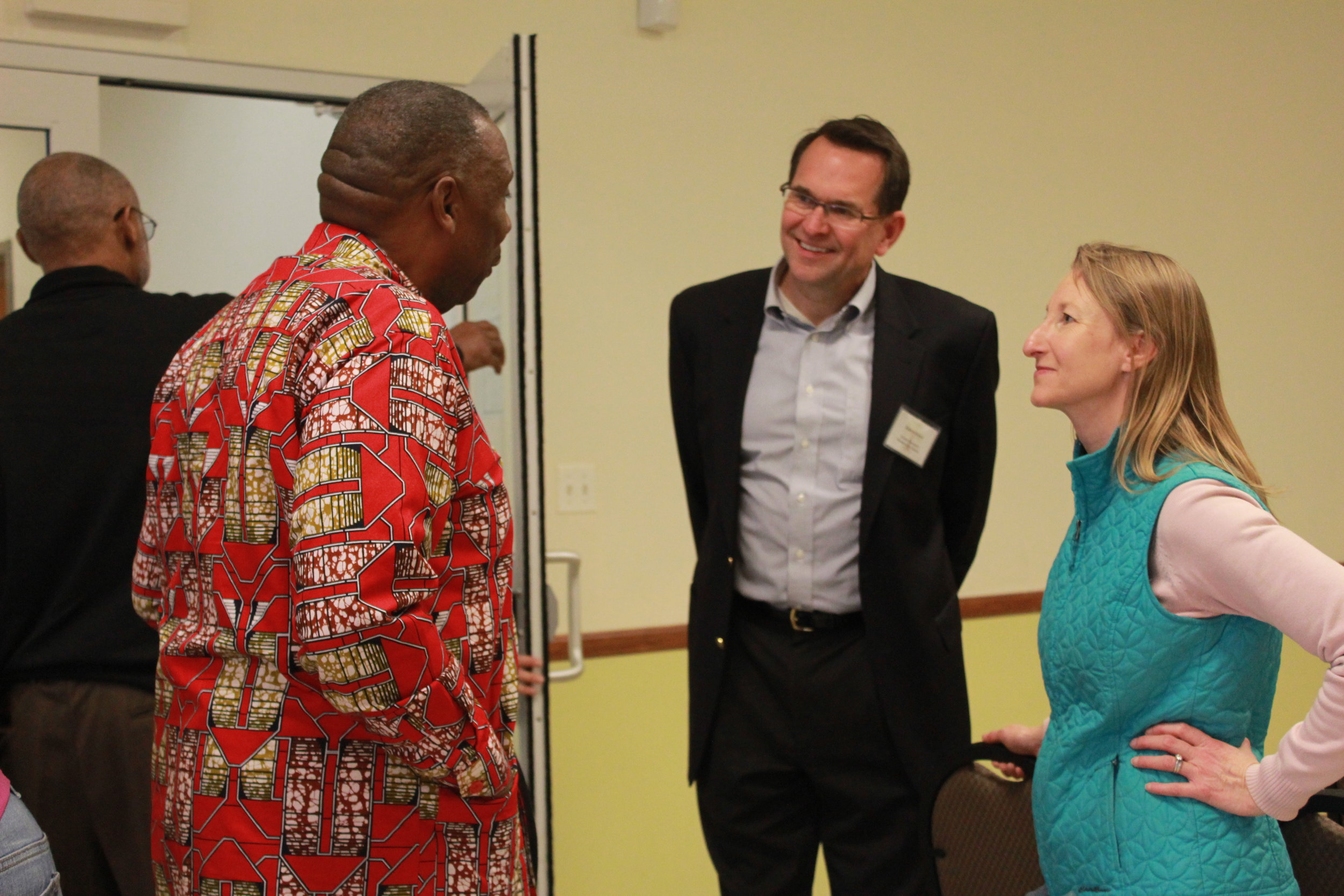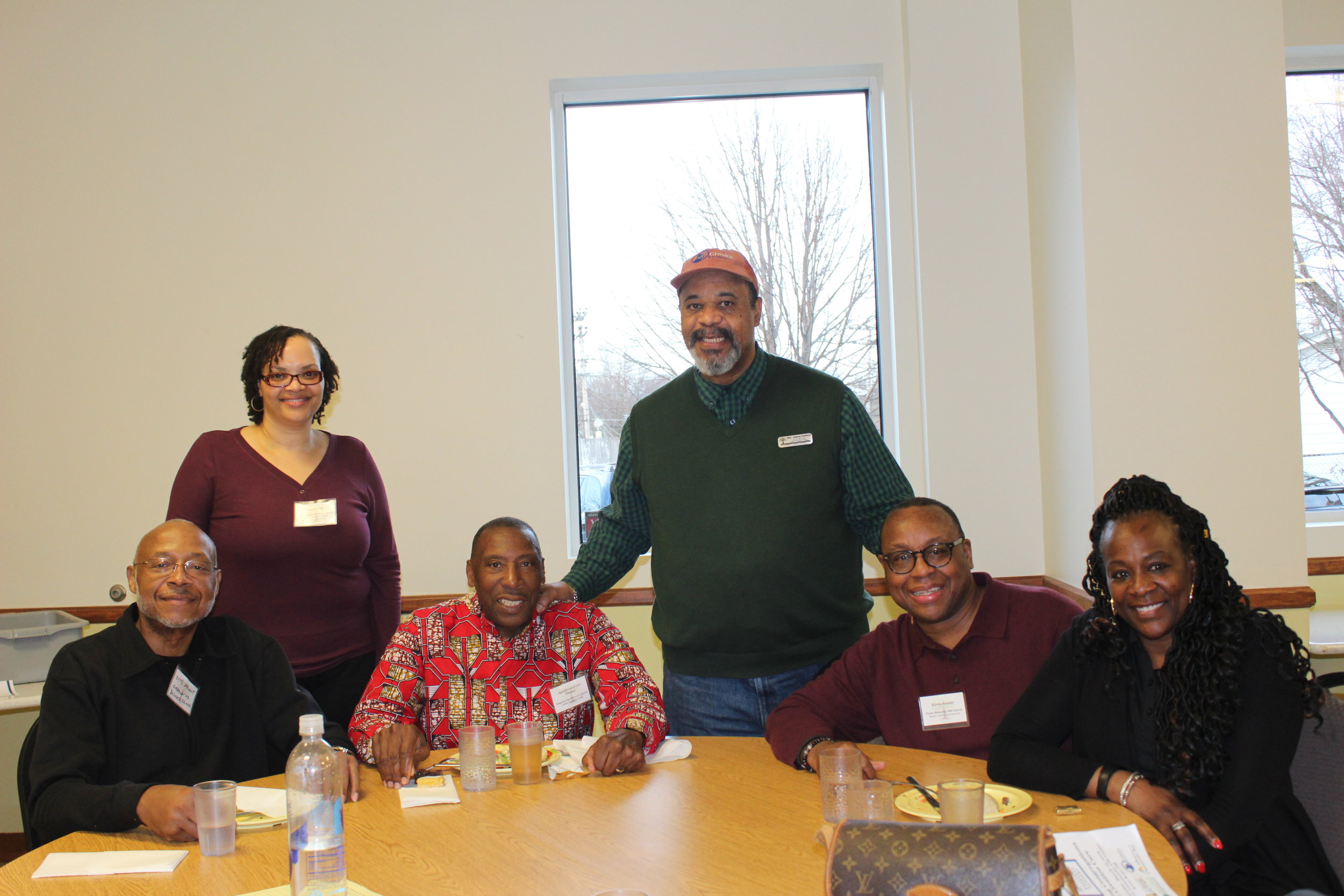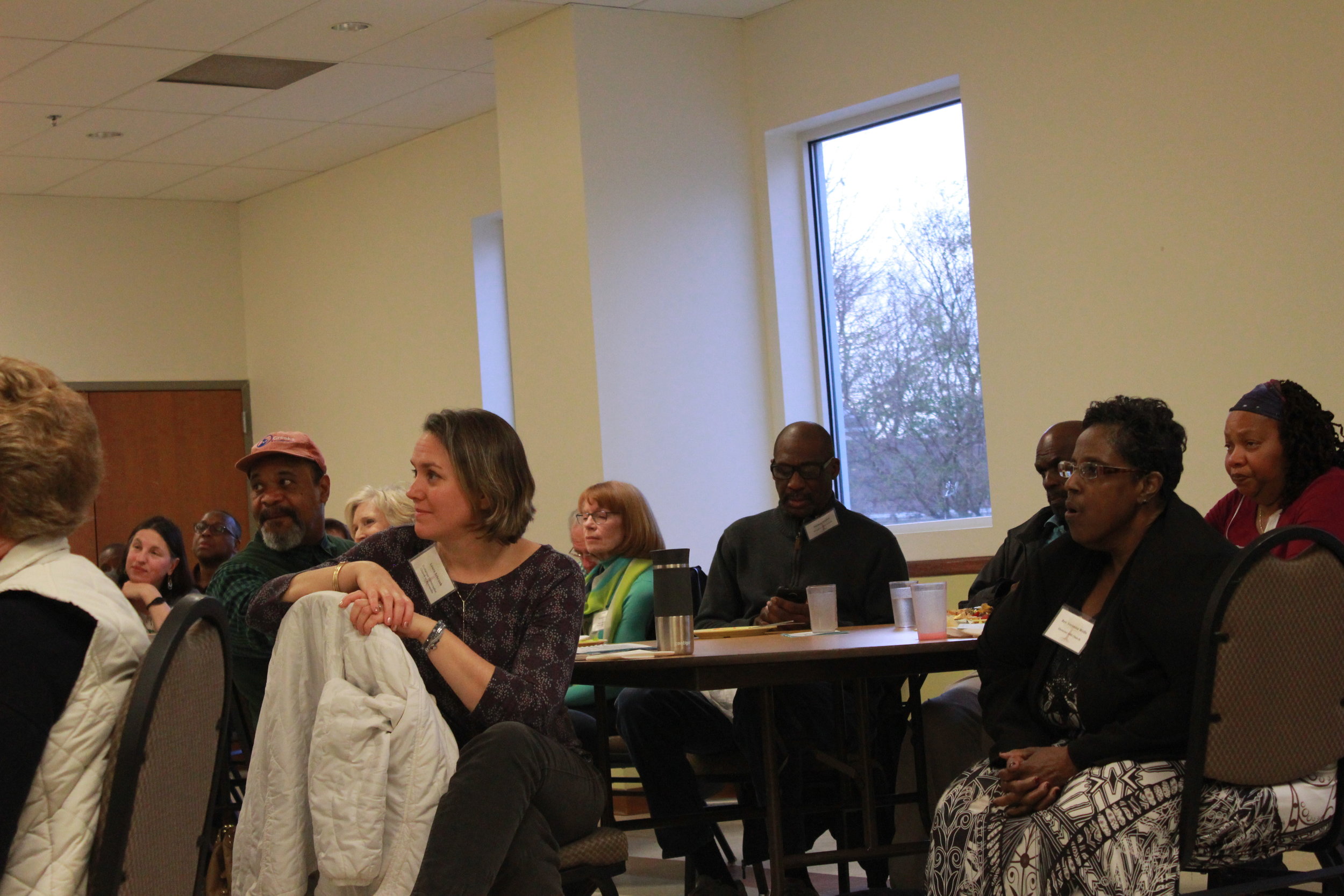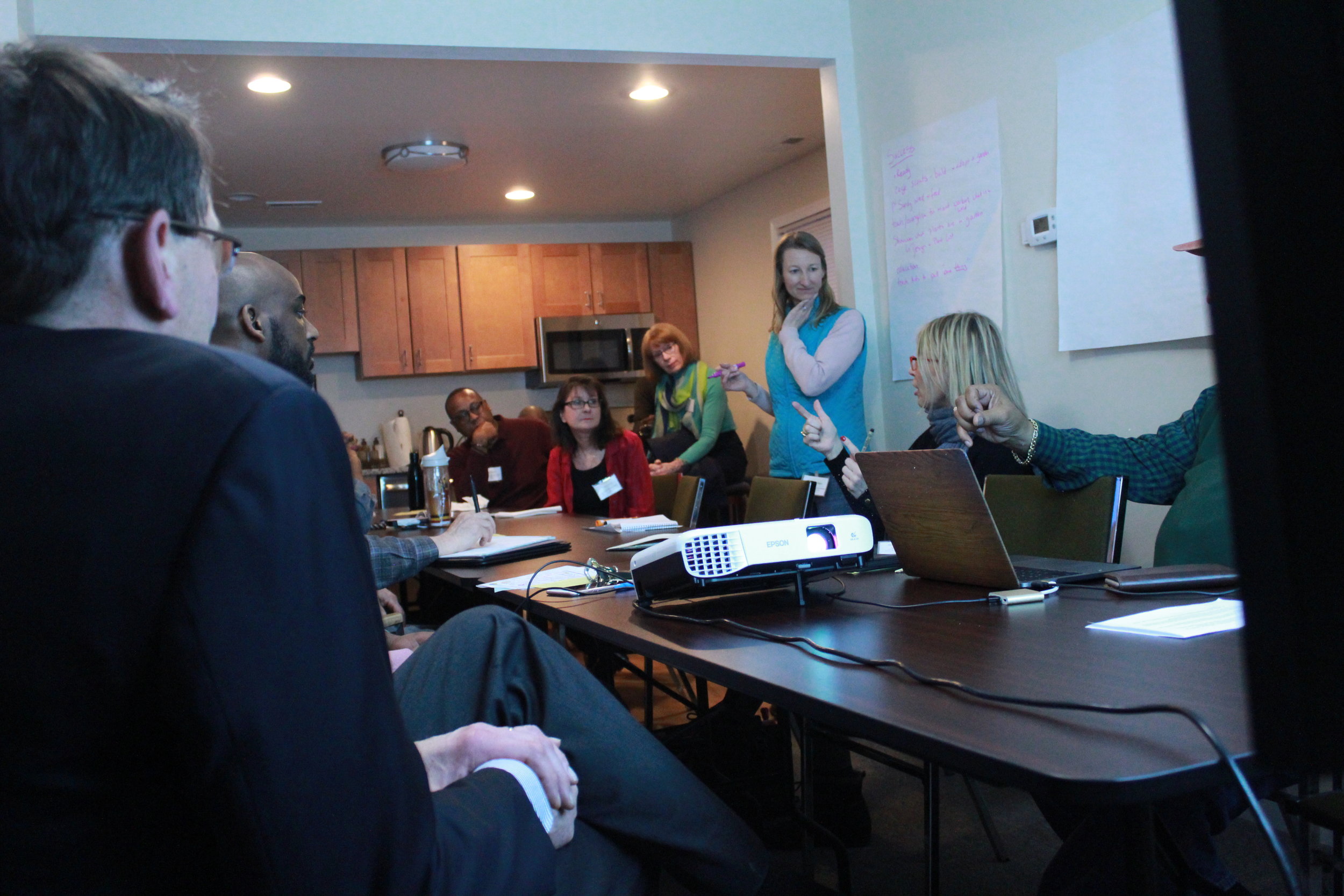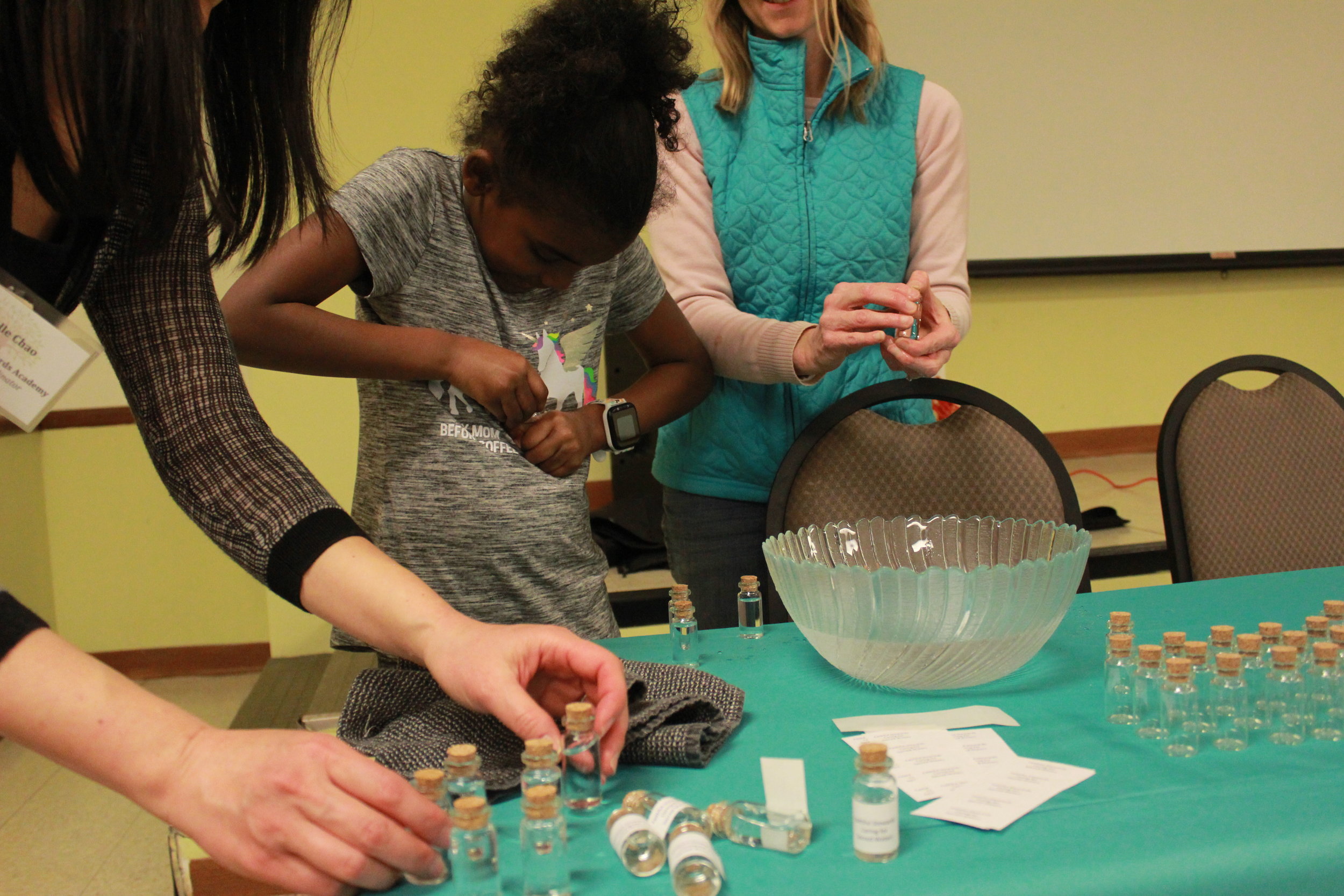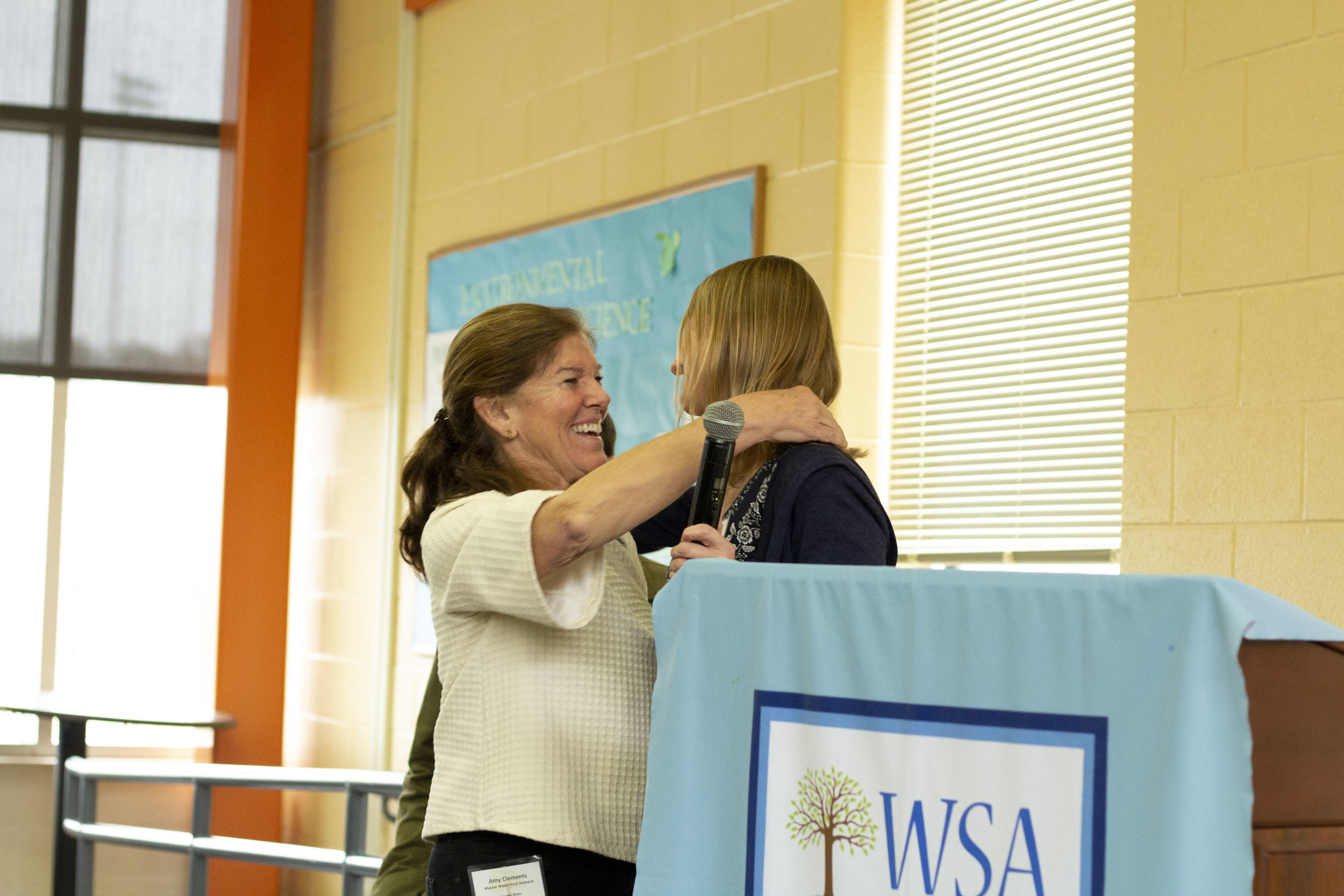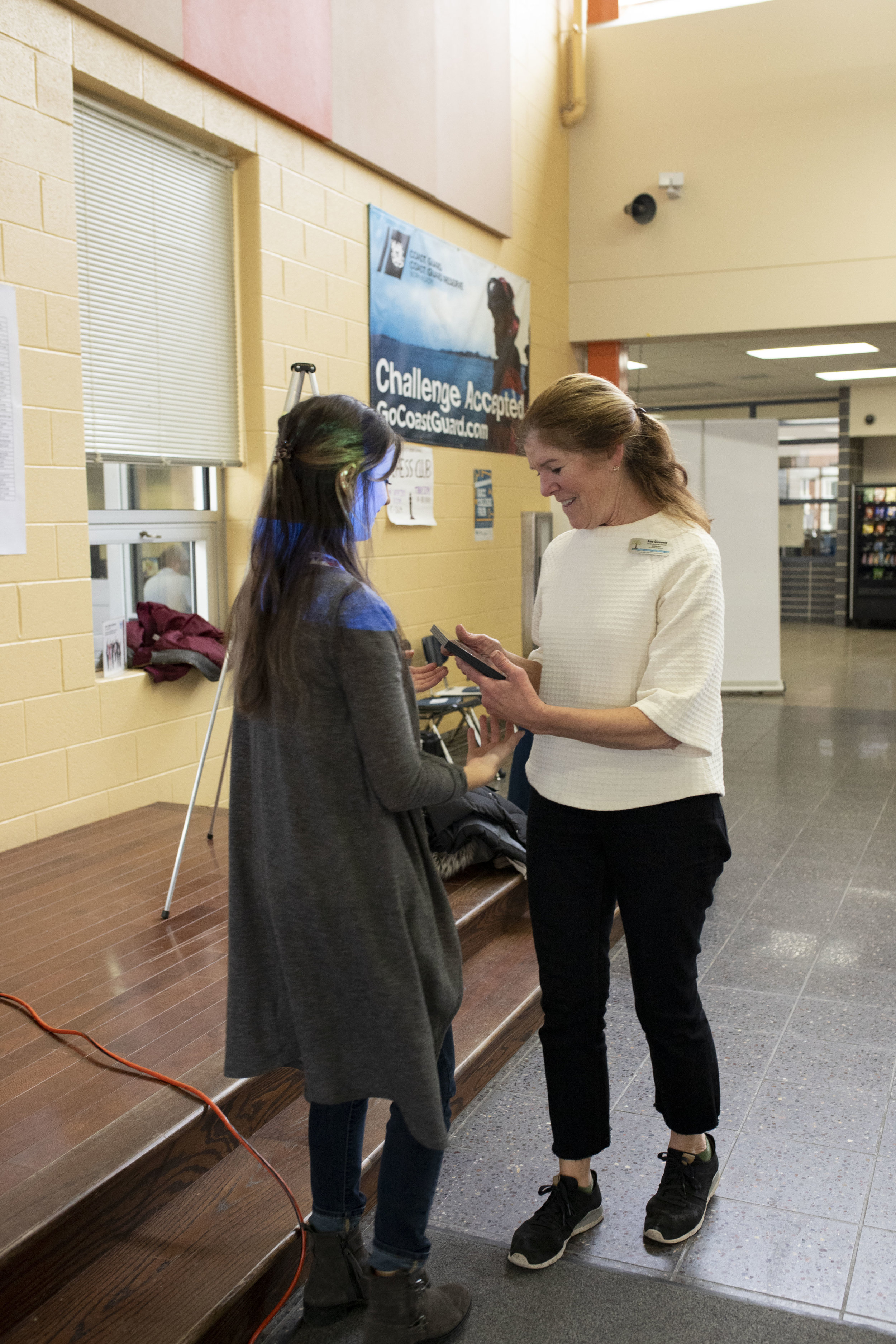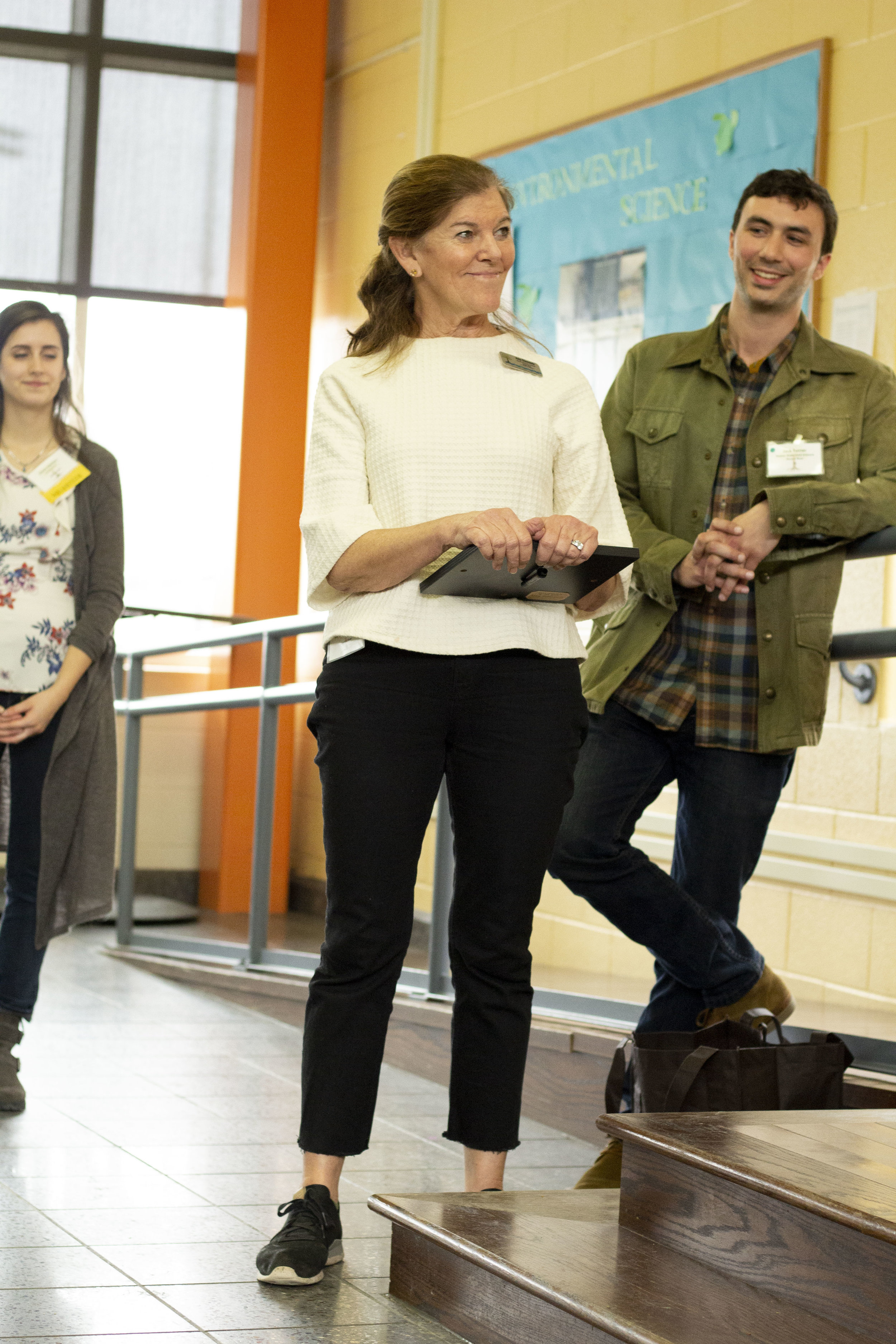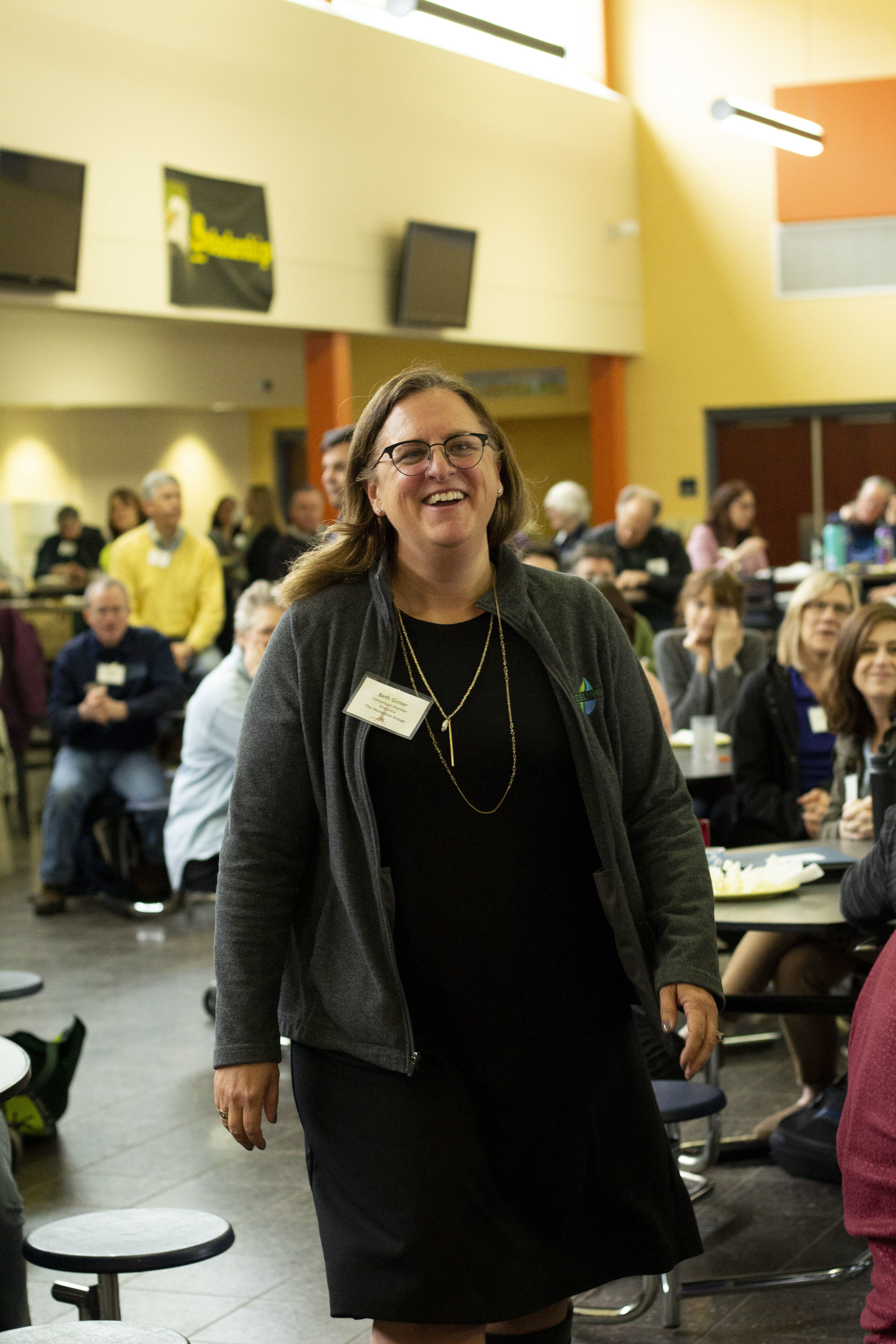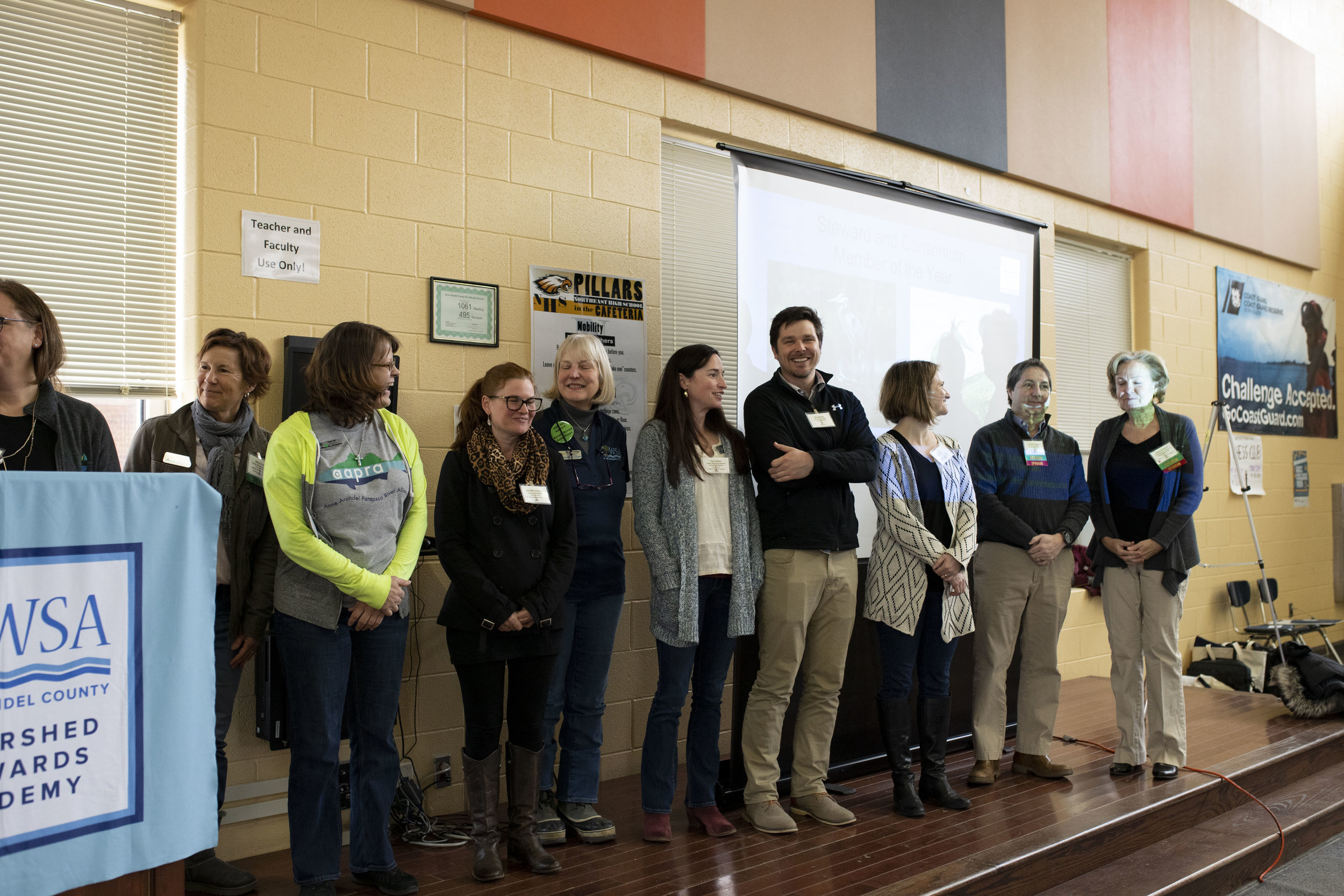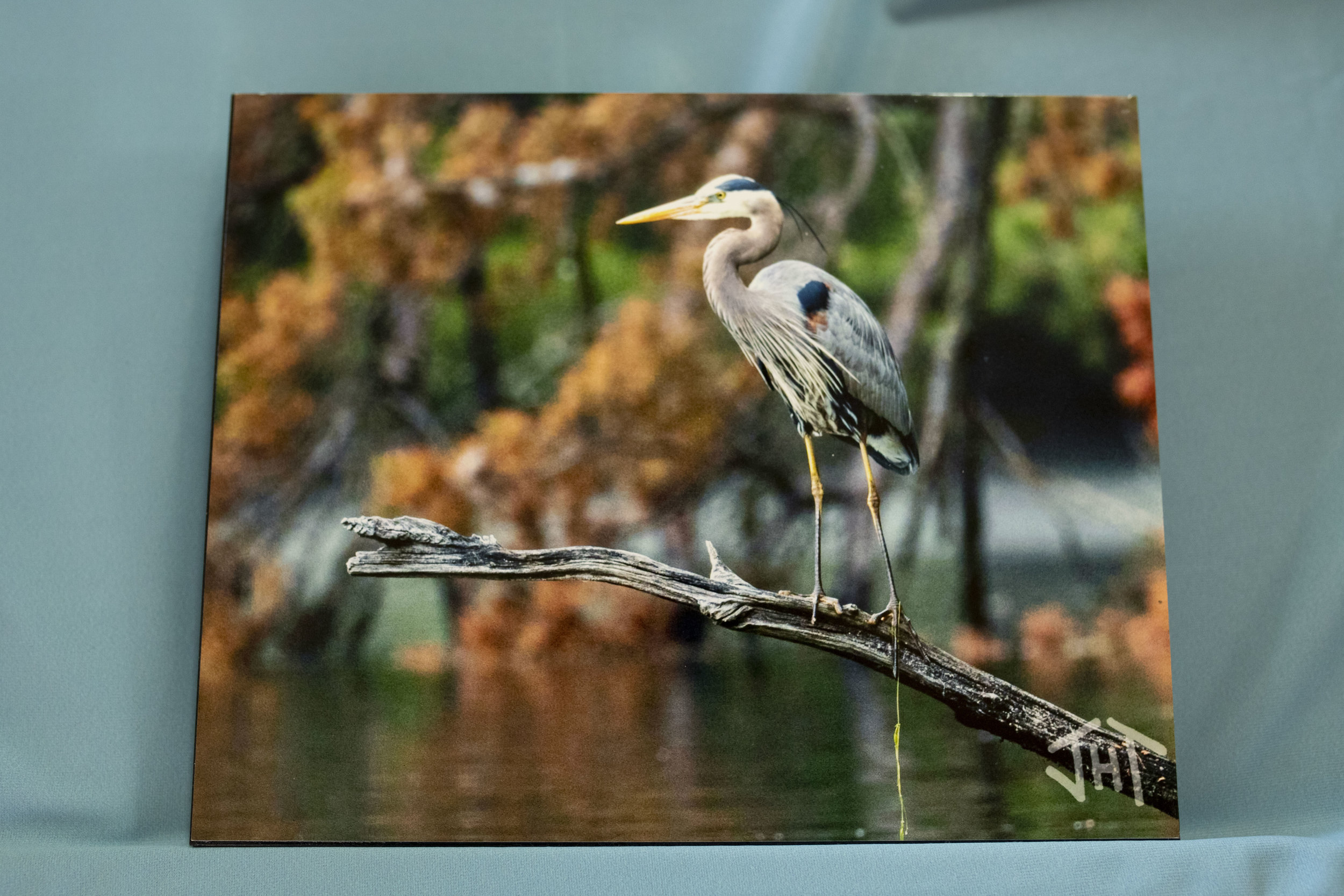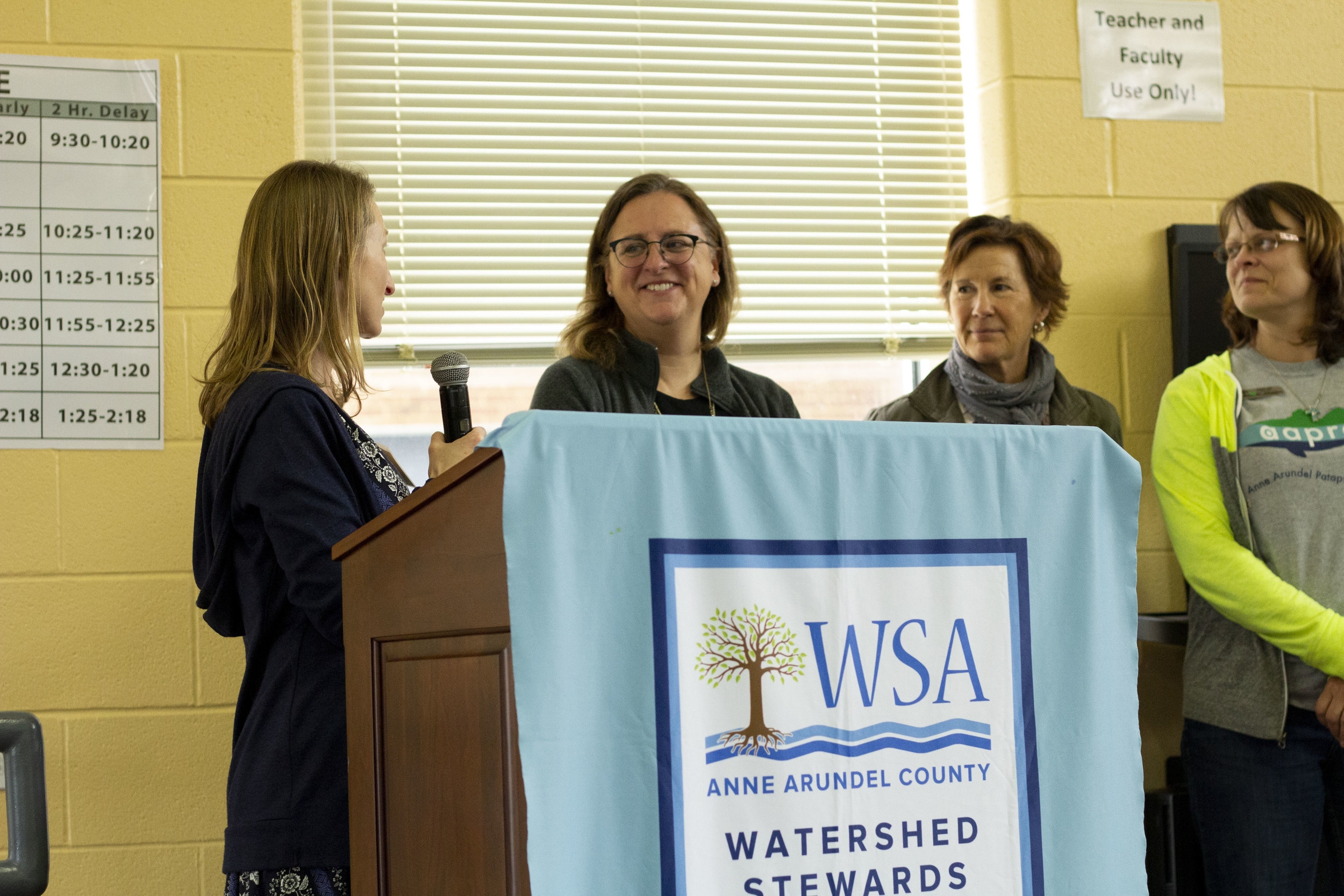Written by WSA Program Coordinator Noelle Chao.
Our RiverWise Congregations Dinner last Thursday was a big success! Over 40 partners representing 16 local congregations attended Uniting Congregations for Creation Care. Hosted by WSA at Mt. Olive in Annapolis with representatives from Interfaith Partners for the Chesapeake, Alliance for the Chesapeake Bay, and Our Creeks and Conservancy, clergy and lay stewards joined us for an evening of fellowship and inspiration. There were so many powerful moments, as clergy and lay stewards raised their voices in song and shared stories about how their faith has inspired them to take action in Anne Arundel County.
All guests participated in one of three interactive workshops, and I was lucky enough to attend Pastor K’s session on “Preaching a Green Message from Your Pulpit.” The conversation she led started with a challenge to the idea that the pulpit is the most effective place to share a message of creation care. (Guess what—pastors know that when they’re preaching from the pulpit, not everyone in the room is always listening!) After reminding the assembled Stewards and clergy that God has given us a responsibility to care for the Earth, she asked them, “How have you done this? How do we bring it about?” What followed was a lively, frank discussion about the challenge of leading a congregation to take action on an issue that might not be foremost on their minds, but which is nevertheless a clear mandate from God. Given that reality, there was a general consensus that the most effective leading happens from pastors taking an active, hands-on role by attending Green Team meetings, learning for themselves the various paths that stormwater takes on their congregations’ grounds, and participating in restoration projects and planting days. At the end, guests were reminded to be intentional, get the kids to reach the adults, and to include a prayer for their local waters during services.
A full recap of the event is below.
Reverend Veronica Wells delivered the opening prayer and led assembled guests in the hymn “What a Mighty God We Serve.” Afterwards, guests attended one of three interactive workshops. Pastor Karen Johnson of First Christian Community Church led “Preaching a Green Message from Your Pulpit,” about the best strategies for church leaders and clergy to share an environmental message with their congregations. During “Beautifying Your Green Spaces for Easter,” Suzanne Etgen and Rev. Johnny Calhoun discussed best practices for maintenance of rainscaping projects and shared information about the READY (Restoring the Environment and Developing Youth) Program, which improves the health of the Bay while creating green jobs for young adults. Bonnie Sorak, Outreach Coordinator for Interfaith Partners for the Chesapeake, shared environmental literacy resources for children’s programming that promote a message of creation care and responsible stewardship of the environment during “Sharing a Green Lesson with Your Children.”
After a vibrant discussion about the guests’ concerns about the environment and their suggestions for taking action, Bonnie and Suzanne shared information about One Water Partnership.
In the closing ceremony, a prayer for clean waters was paired with the spiritual “Wade in the Water,” with singing led by Rev. Calhoun. Each guest was given a small, glass vial of blessed, clear water to commemorate the event.
We look forward to these congregations turning knowledge into collective action for healing the Earth!


